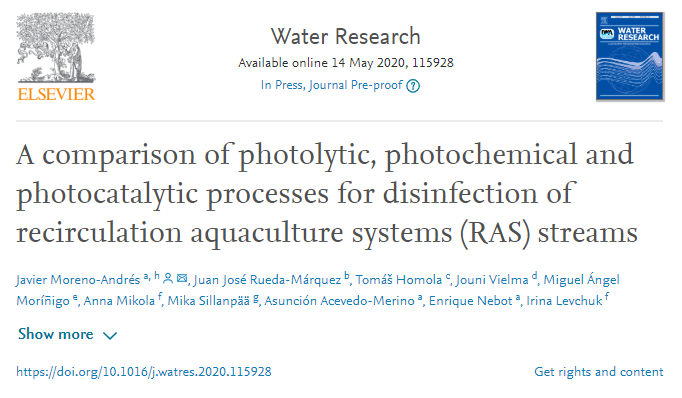Primera publicación asociada en la que se estudia la eficacia de distintos POAs con el objetivo de desinfectar agua asociada a la industria acuícola.
https://www.sciencedirect.com/science/article/pii/S0043135420304656#undfig1
Abstract:
The development of technologically advanced recirculation aquaculture systems (RAS) implies the reuse of water in a high recirculation rate (>90%). One of the most important phases for water management in RAS involves water disinfection in order to avoid proliferation of potential pathogens and related fish diseases. Accordingly, different approaches have been assessed in this study by performing a comparison of photolytic (UV-LEDs) at different wavelengths (λ = 262, 268 and 262 + 268 nm), photochemical (UV-LEDs/H2O2, UV-LEDs/HSO5− and UV-LEDs/S2O82-) and photocatalytic (TiO2/SiO2/UV-LEDs and ZnO/SiO2/UV-LEDs) processes for the disinfection of water in RAS streams. Different laboratory tests were performed in batch scale with real RAS stream water and naturally occurring bacteria (Aeromonas hydrophyla and Citrobacter gillenii) as target microorganisms. Regarding photolytic processes, higher inactivation rates were obtained by combining λ262+268 in front of single wavelengths. Photochemical processes showed higher efficiencies by comparison with a single UV-C process, especially at 10 mg L−1 of initial oxidant dose. The inactivation kinetic rate constant was improved in the range of 15–38%, with major efficiency for UV/H2O2 ∼ UV/HSO5− > UV/S2O82-. According to photocatalytic tests, higher efficiencies were obtained by improving the inactivation kinetic rate constant up to 55% in comparison with a single UV-C process. Preliminary cost estimation was conducted for all tested disinfection methods. Those results suggest the potential application of UV-LEDs as promoter of different photochemical and photocatalytic processes, which are able to enhance disinfection in particular cases, such as the aquaculture industry.



